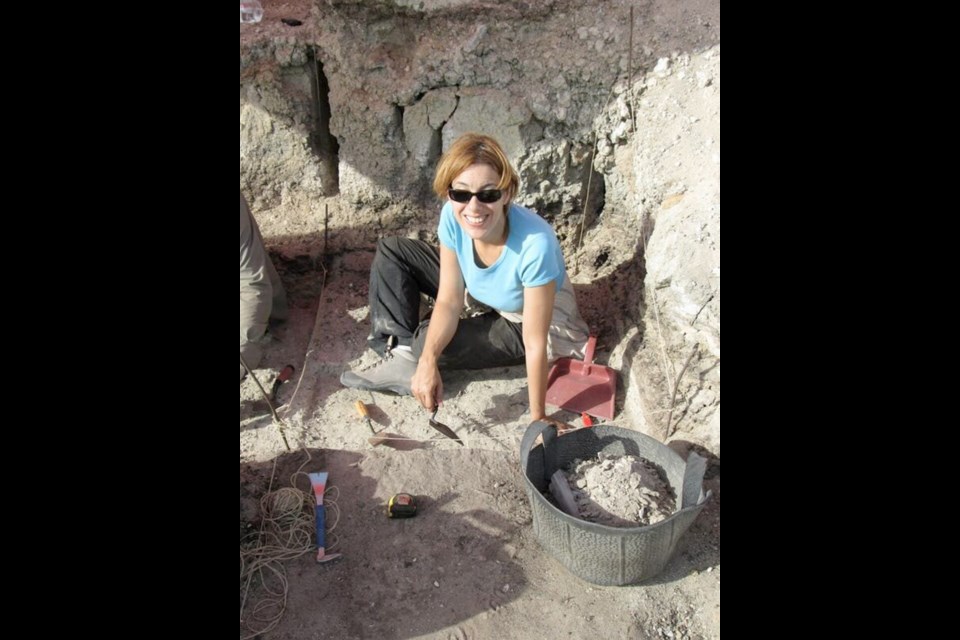Early, prehistoric humans lived complex lives eating meat from animals large and small, indicates a new study led by a University of Victoria anthropologist.
Prof. April Nowell has completed a study on 250,000-year-old stone tools found in digs at a prehistoric oasis in Jordan. Laboratory analysis revealed the tools, the oldest ever so tested, had attached proteins from many prehistoric animals: horses, rhinoceros, camel, cows and ducks.
For Nowell, the findings are a strong indication early humans were adept at exploiting a variety of animal food resources, a generalist survival approach that later made the human animal so successful.
“It gives us a window into the complexities and different strategies they may have employed,” said Nowell in an interview. “You hunt or scavenge a rhino very differently than you would get a duck.”
Nowell’s findings smash all previous records for recovering and identifying old proteins from ancient tools. A 2008 study on tools found in Ohio recovered proteins from horse, bison, duck, trout and mammoth dating back only 11,200 years, far short of the quarter-million years of Nowell’s subjects.
Nowell’s tools also reveal new, direct evidence of tools used to process animals. Previously, anthropologists had stone tools. Meanwhile, they also had ancient bones with marks, scrapes and scratches that looked as if they were likely made by stone tools.
“But now we have actual protein residue on the actual stone tools, so in some ways it’s a new smoking gun,” said Nowell.
Nowell’s proteins were revealed with a laboratory technique called cross-over immunoelectrophoresis. It detects and identifies proteins using the defensive immune responses generated by antibodies reacting to foreign antigens.
The stone tools were identified by characteristics long studied, and even replicated by anthropologists.
“There are very characteristic marks on a stone tool,” Nowell said. “Tools are very different from a natural rock to the trained eye.”
The protein tests were used on 44 stone tools that showed signs of use, such as small chips or polished areas.
But at first it was almost a whim — “nothing ventured nothing gained” — when Nowell acted on a colleague’s suggestion to use the pricey laboratory technique, starting with just six of the stone tools collected in Jordan.
“So when one came back positive for horse, we were just so excited,” said Nowell.
The dig area was, in prehistoric times, a marsh or oasis. Nowell said it’s most likely the early humans used it as a temporary stop, rather than a permanent home.
The dig revealed stone tools made from rock collected locally. But it also yielded tools made from stones collected a distance away, indicating early humans collected and hung on to specific tools for a period of time. They were not just opportunistically fashioning tools as the need arose.
Nowell’s study retrieves tools from the evolutionary time when modern humans, Homo sapiens, were first arriving in the world.
So, from a point of view of species classification, Nowell said the tools were fashioned by an early human species, Homo erectus or early Homo sapiens.
Nowell’s stone tools are also found in an area, the Middle East, that is very interesting to anthropologists. It’s a geographic link between Africa, where early humans first evolved, to Europe and Asia, where early humans migrated, eventually reaching every habitable region of the planet.
“It’s a corridor through which plants, animals and early hominin passed through,” she said. “A colleague of mine calls it a ‘Paleolithic bus station’ or a ‘stone age bus station.’”



